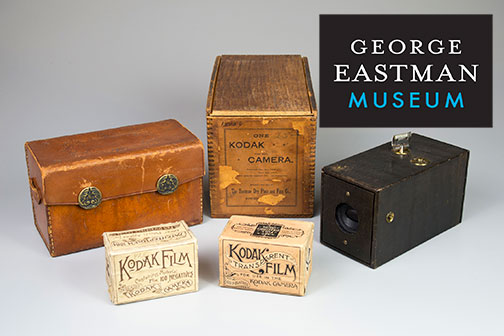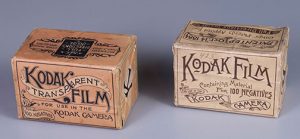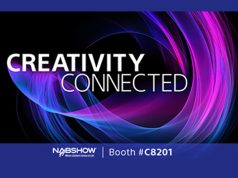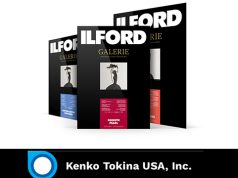
Rochester, NY—The George Eastman Museum recently purchased the only known box of Kodak film for use in the Kodak camera (sometimes called American film). The Eastman Dry Plate and Film Company introduced the camera and film in 1888.
The museum also acquired one of only three known boxes of Kodak Transparent film. The film was introduced in 1889 for use in the Kodak camera.
Now a part of the museum’s renowned technology collection, these unopened boxes of film complete its holdings related to the original Kodak camera. They will add to the museum’s examples of the camera, case, shipping box and also sample images.

“These two rolls of film make a critical contribution to the Eastman Museum’s holdings of photographic technology—considered the leading collection of its kind in the world,” said Bruce Barnes, Ron and Donna Fielding director, George Eastman Museum.
“Given their importance and rarity, these boxes of film are not only among the most significant objects in our technology collection, they are also extremely important to the evolution of photography and the history of Rochester, New York.”
The acquisition of these two rolls of film were funded by donations. They were given by Steven Sasson, the inventor of digital photography and a trustee of the George Eastman Museum, and also Robert and Lynne Shanebrook. Robert Shanebrook is the author of Making Kodak Film. Both boxes of film are currently on display at the museum.
Introduced in 1888, the Kodak camera sold for $25, including factory-loaded film to take one hundred 2.5-inch-diameter circular pictures. After photographs were taken, the still-loaded camera was returned to Rochester, New York, and for a fee of $10, the film was developed, prints made and a new roll of film inserted before the camera was sent back to its owner.
The company adopted the slogan “You press the button, we do the rest”—penned by George Eastman—and Kodak snapshots became a cultural phenomenon.
“The debut of Eastman’s American film and Transparent film in the late 1880s was the beginning of snapshot photography, and a turning point for the company and the city of Rochester,” said Todd Gustavson, Technology curator, George Eastman Museum.
“We have always kept an eye out for film manufactured in the late 1880s to complete our collection of objects related to the first-generation Kodak camera. We jumped at the chance to bring these two boxes home to Rochester,” added Gustavson.
Eastman Kodak Company’s Roll Film
Roll film represented the beginning of the company’s business model, one of the most successful for much of the twentieth century. Kodak’s American film, which had a paper substrate, was first introduced with the Eastman-Walker roll holder of 1885. It was marketed to professional photographers, though they did not embrace it.
Undaunted, Eastman decided to offer the film as well as a new camera, the Kodak, to amateur photographers. Furthermore, the Transparent film, which had a nitrate substrate, was for a time sold alongside American film. American film was then discontinued in about 1900.
Transparent film was the flexible photographic material used by most people experimenting with early motion pictures. Thomas Edison’s assistant W. K. L. Dickson took Kodak Transparent film (which was 70mm wide), slit in half to 35mm and then perforated it. He then used it as the flexible medium to store images to be presented in the Edison Kinetoscope. That was the first 35mm motion picture-viewing device.
The George Eastman Museum

Founded in 1947, the George Eastman Museum is the world’s oldest photography museum. It is also one of the largest film archives in the United States.
It is located on the National Historic Landmark estate of entrepreneur and philanthropist George Eastman, the pioneer of popular photography. Its holdings comprise more than 400,000 photographs, 28,000 motion picture films and a preeminent collection of photographic and cinematographic technology.
It also houses one of the leading libraries of books related to photography and cinema. It also has extensive holdings of documents and other objects related to George Eastman. eastman.org





